Coral bells, or Heuchera spp., are garden favorites with their bright leaves and flexible growth. These perennials aren’t just attractive, they also adapt well in many garden situations. They thrive in USDA zones 4 to 9.
To create a healthy garden ecology, “Companion Plants for Coral Bells” are a need. Gardeners can create vibrant, healthy gardens by matching plants and reducing chemicals. The planting method, based on history, helps gardens grow better. It boosts crop yields and controls bugs naturally.
Let’s jump into the topic of companion planting, particularly for coral bells. We’re looking at the perks it gives and the boost it may add to your garden’s charm and usefulness. We’ll also take on some real-world ways to use companion planting. We’ll gear it towards what your garden specifically needs. So, we are setting off to explore coral bell companion plants. On this ride, we’ll uncover tips and tricks for a blooming garden.
Understanding Companion Planting
Companion planting is a basic garden method. It pairs different plants to boost garden health, looks, and yield. The teamwork between plants is more than just living together; it gives shared advantages like fighting off pests, upgrading soil, and more food growth. Fundamentally, companion planting imitates the harmony of nature, where plants help each other grow.
In the past, companion planting was an old farm method. Native cultures saw how different plants interacted. Over the years, societies all over the world came up with their companion planting approaches, noting its success in boosting garden health and lasting value.
Today’s gardens often use a special technique called companion planting. This practice helps us make the most of our gardening spaces and pass up chemicals. We choose plants to grow together that like the same things. They might need the same soil, enjoy the same amount of sunlight, or keep pests away. This way, we grow gardens that look good, feel good, and do good for our earth.
Companion planting really matters today. As we think more about our earth and how our gardens affect it, more and more of us use companion planting. It’s nature’s own way of helping plants. By letting plants help each other, our gardens become tiny worlds where everything works together. Gardening this way is good for our plants and it’s good for earth too.
This article is all about companion planting and its impact on coral bells. Companion planting helps these plants grow well and also improves the look of your garden. For gardeners who know its rules and uses, companion planting makes coral bells thrive. It helps make gardens that are pleasing to the eye. So, let’s learn about the old and new ways of companion planting. Doing this, we’ll discover its benefits for a good garden and great-looking plants.
Why Companion Plants for Coral Bells?
Companion plants are key in boosting the growth of coral bells. They transform the bells from solo acts to bright garden centerpieces. Companion plants chosen for coral bells bring a lot of good things – for individual plants and the whole garden too.
First off, companion plants help coral bells grow better. They give support and grow well together. If companions needing similar soil and sunshine are chosen, gardens can have the best conditions for growing coral bells. Also, some companion plants can keep bugs and diseases away. This way, coral bells stay healthy without using chemicals.
Not just useful, companion plants make coral bells look better. They make your garden look lively and well-matched. Carefully chosen companions can match coral bells’ special leaf colors and textures. They make your garden multi-layered and exciting. Different leaf shapes or same-color flowers, companion plants make your garden look better. They catch your eye and make you look at important parts.
Picking companion plants for coral bells helps make a balanced garden ecosystem. Adding different plants and encouraging variety can give plants strength. Happier plants can improve each other’s health. This is a green way of gardening. It makes the garden look good and keeps the environment healthy.
So, companion plants for coral bells? They’re crucial. They help create gardens that not only look great, but also thrive. It’s about choosing the right partners for your coral bells. If you do, your garden can reach its full potential. It’s about more than just looks. It’s also about sustainability. Let’s dive in. Let’s look at practical ways to use companion planting. You’ll see how this can benefit your coral bells, and your whole garden too.
Tips for Companion Planting with Coral Bells
When planting coral bells with other plants, think strategically for their success together. Here are some practical tips to guide you in creating a harmonious garden bed: .
- Let’s start by looking at what coral bells like – they love soil that drains well and is neutral to slightly acidic. When choosing companion plants, go for those that thrive under similar soil conditions. This will ensure they both grow well.
- Coral bells are great. They can survive different light conditions. But what about their companion plants? Make sure you pick companions that can handle the same amount of sun or shade that your garden gets. This way, all plants will grow healthy because they get the right amount of light.
- Companion plants differ in their need for watering, fertilizer, and pruning. For coral bells, choose companion plants that match the level of effort you want to put into gardening. Select easy-care plants as companions to reduce your workload while still having a colorful garden.
- Make your garden bed more attractive by picking companion plants with colors and textures that go well with coral bells. Match them with plants having unique colors or leaf shapes for added interest. Try out a range of color schemes and textures for a balanced garden design that pleases the eye.
- Make your garden diverse with different companion plants. Choose plants with different heights, flowering times, and growth styles. This helps create a strong, varied ecosystem. It aids pollinators and helpful insects. Combine plants that flower at different times, live for a year or many years, and bushes for continuous intrigue and diverse living conditions for wild animals.
- Think about more than just look while pairing plants. Consider how plants may help each other. Pick plants that do more than just look good. They could attract pollinators, discourage pests, or better the soil’s health. Planting scented herbs, like lavender or rosemary, with plants like coral bells can keep pests away while making your garden smell good.
- When planting coral bells and similar plants, note the space they need. Make sure plants aren’t too close in the garden bed. This stops them from fighting for food and space. It also helps air move between plants. Use suggested distances for each plant type. This helps plants grow well and stops problems like diseases or slow growth.
Best Companion Plants for Coral Bells
When selecting companion plants for coral bells, pick kinds that improve their growth patterns and also make your garden look better. We’ve got a variety of companion plants listed by plant types. Each one has something special to offer:
Groundcovers
- Ajuga, or bugleweed is a quick-spreading groundcover that blooms violet flowers in spring and early summer. This plant fills landscaping gaps well and is good at warding off weeds. Its quick growth helps maintain soil moisture, which is great for coral bells.
- Creeping Phlox is a groundcover needing little upkeep. It forms a thick layer of leaves with bright flowers blooming in spring. It’s a good choice to edge garden beds because it spills over the sides. This offers a nice counterpoint to the taller coral bells.
Sweet Woodruff is quick to take over with small, white blossoms and aromatic leaves. Think of it as a living weed barrier and earth helper, forming a thick bed around coral bells. Plus, animals like deer and rabbits tend to avoid it.
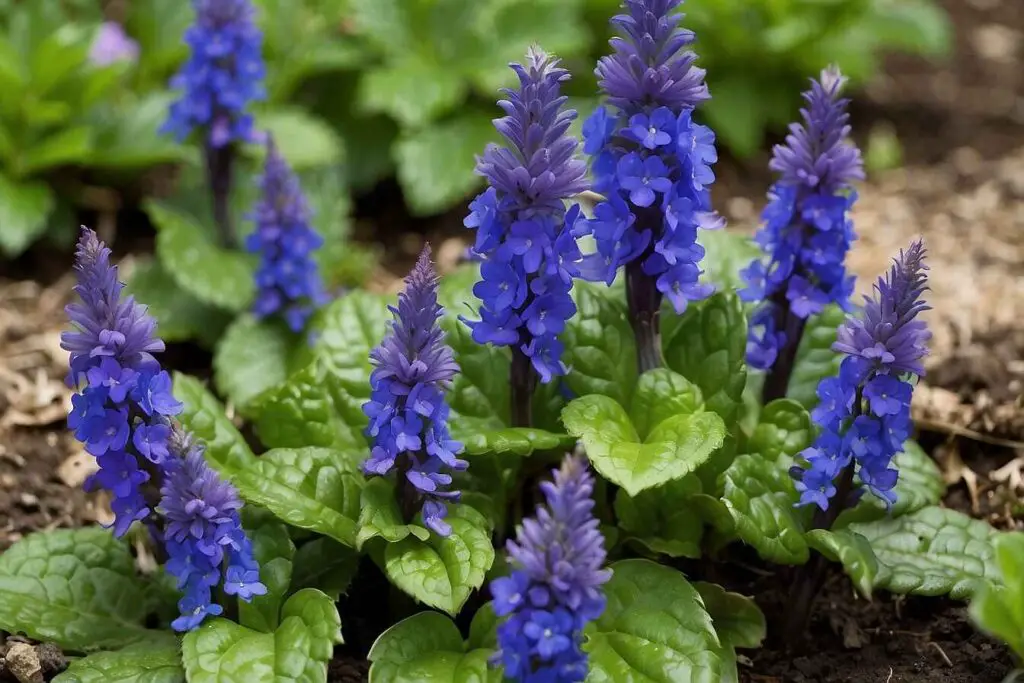
Flowering Annuals
- Impatiens : These adaptable annuals love both partial and full shade. This makes them companions for coral bells in shaded garden spots. Their bright flowers bring color and interest in different seasons. They shine against the green leaves of coral bells.
- Petunias : Petunias are traditional flowering annuals loved for their lush blooms and vine-like growth. Set them up as a border for coral bells for a show of color and texture. This mix improves the garden bed’s overall look.
- Begonias : Begonias are plants that love the shade. They bloom every year and have eye-catching flowers. These come in many colors and shapes. Begonias grow close together, and their bright blooms are charming. They go well with coral bells, adding a nice touch of color to shade-filled garden spots.
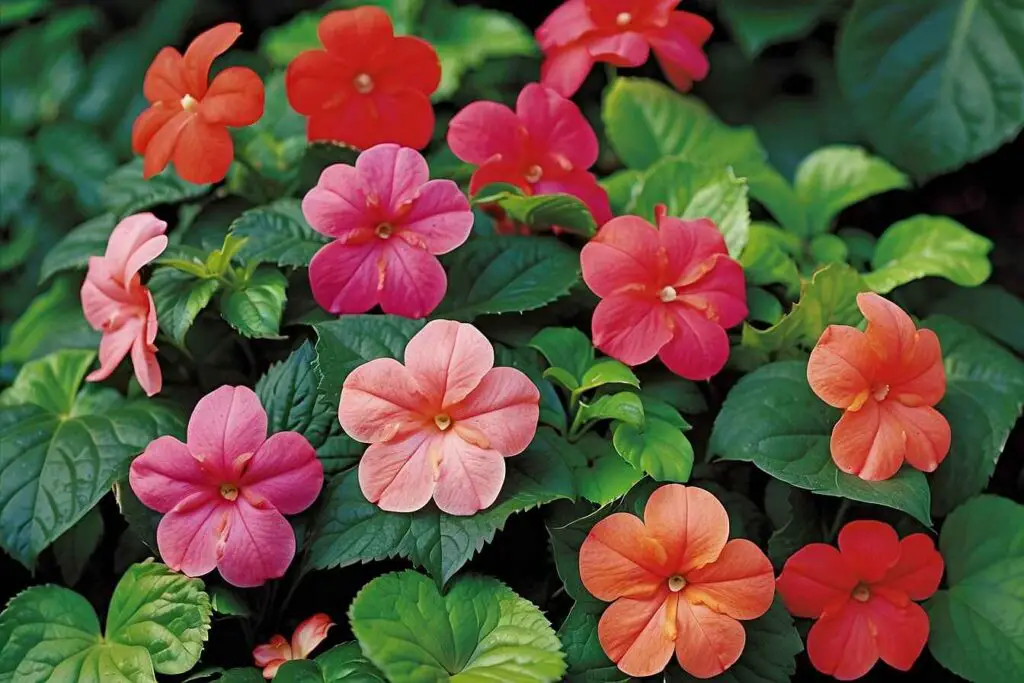
Shade Perennials
- Hosta : Hostas love shade. Their leafy look stands out and they look great next to coral bells. The bold leaves of hostas and fine leaves of coral bells form a nice contrast.
- Astilbe : Astilbes are perennials with feather-like blooms and ferny leaves. Their fluffy look brings dimension to garden beds. They go well with the compact growth of coral bells and their flowers last a long time.
- Trillium : Trillium is a type of plant native to North America. It’s known for its three-petaled flowers and wide leaves. If you plant them with coral bells, it can create a woodland garden look. The trillium and coral bells bloom at the same time. This creates a pleasing display of fresh, spring plants.
Sun Perennials
- Daylilies : These sun-loving plants offer many blooms and are easy to care for. They grow in clumps, fitting well with coral bells. Their vibrant flowers give gardens a lively touch.
- Lupine : Lupines have tall, rainbow-hued flower spikes. These plants pair well with coral bells, bringing a cozy, cottage-like feel to any garden. They add height, while coral bells contrast with them at the ground level.
- Pansies : Pansies add a burst of joy during the cool seasons. They’re small, making them a great pair for coral bells. They color the garden early in spring, before coral bells introduce their own vivid leaves.
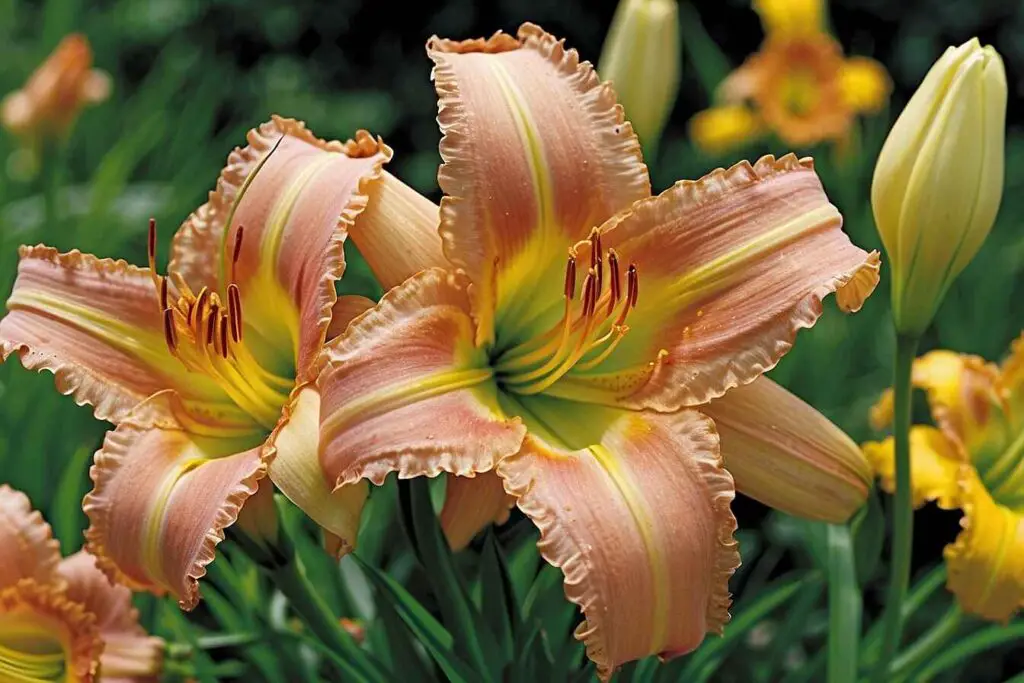
What Not to Plant with Coral Bells
I wouldn’t say I advise against any specific plants to grow with coral bells. But, the key is taking into account their care needs, their environmental necessities and how they look next to each other in the garden.
Plants that need sandy or somewhat dry soil won’t do well with Heuchera. This applies to those plants that love deep shade too.
Coral bells can look great with larger shrubs like lilacs or hydrangeas. Just be sure not to place them too close. If coral bells are right under a shrub’s canopy, they won’t get enough sun. They’ll also compete for things like water and nutrients.
Creating Harmonious Garden Designs
Creating a garden layout that includes coral bells and companion plants takes thought. It’s about balance, matching colors, and looking good all year. Here’s how to make a beautiful, lasting impression with these plants:
- Good garden design means a well-distributed visual appeal. When using coral bells and companion plants, aim for uniform elements. Mix heights, textures, and shapes of the plants. For instance, put tall plants next to short ground-cover plants. This contrast grabs your attention.
- Select plants with complementary colors for a cohesive garden design. It creates harmony. Consider foliage and flower colors when choosing companion plants for coral bells. This creates striking color combinations. Pair coral bells with flowers that have colors like purples, blues, and pinks.
- Designing garden beds with seasonal interest ensures year-round beauty and enjoyment. Use plants that look interesting in various seasons. Include bulbs that bloom in spring and perennials that flower in fall. Select plants that go well with coral bells during different seasons. Use evergreen groundcovers for winter and colorful perennials for summer.
- When talking about garden layout, stress on the role of choosing companion plants that lift the overall look of coral bells. Point out how smart plant choice can make a beautiful garden that changes with seasons, catching the eyes and praise of garden lovers.
- Use height order for more depth and size in garden plots. Plant taller ones at the back and then shift to shorter ones at the front. This gives depth and angle, pulling the eye into the garden and showing the special traits of each plant.
Use these garden design principles to create beautiful settings with coral bells and their companion plants.. From tiny borders to big cottage gardens, careful plant choices and good positioning can make your garden look great for many years.
You may be interested in reading Best Cantaloupe Companion Plants
Citations
- University of Wisconsin Lady’s mantle plant profile
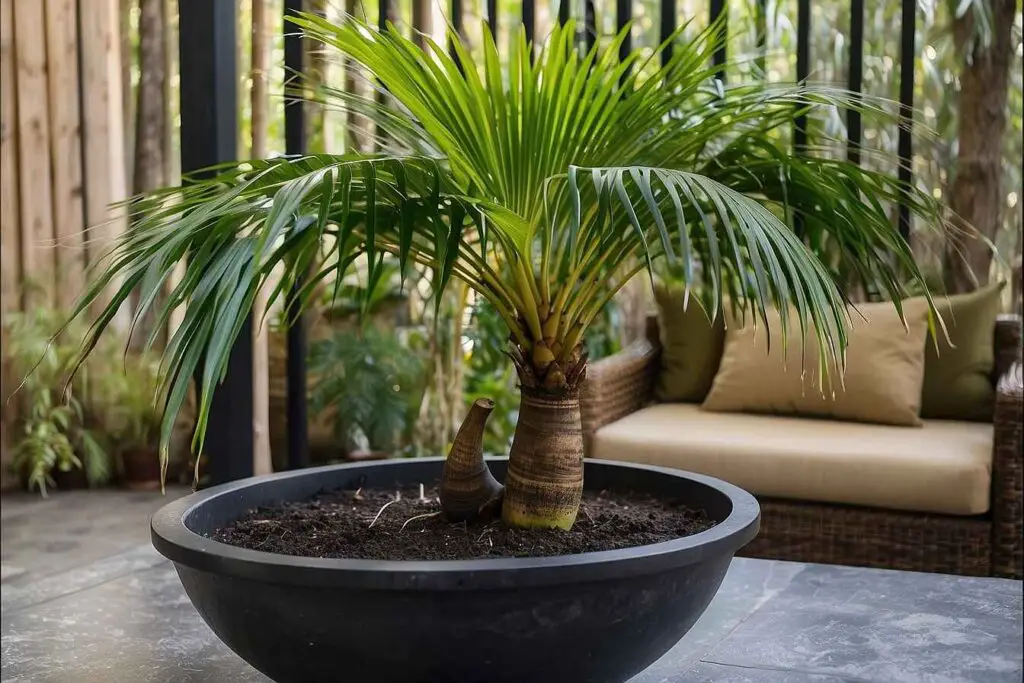
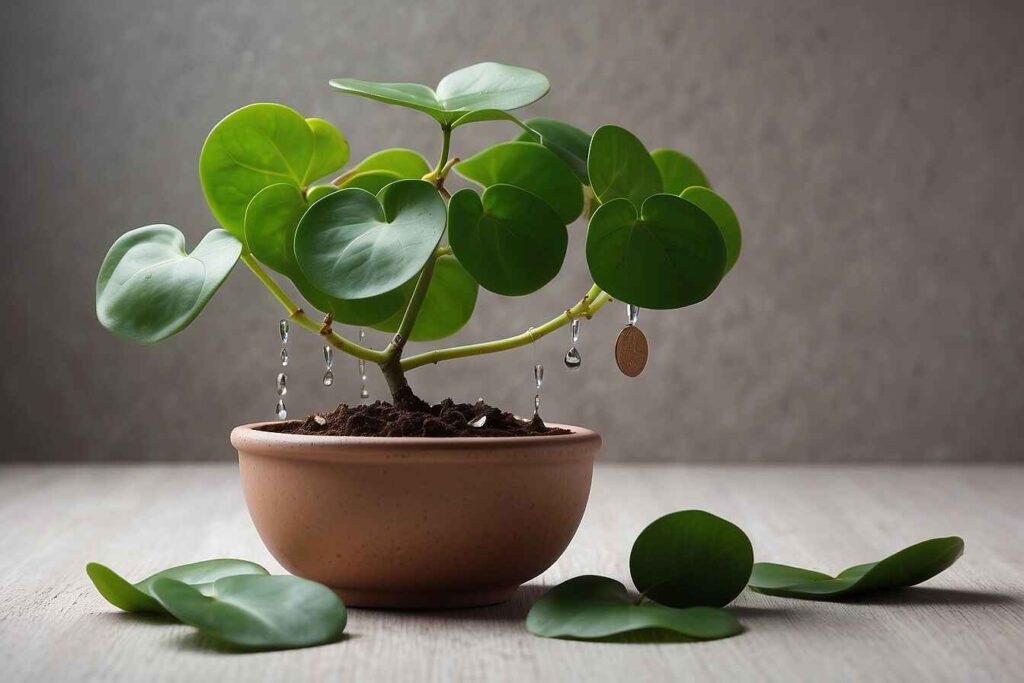
it can be really helpful for us .
very informative blog..